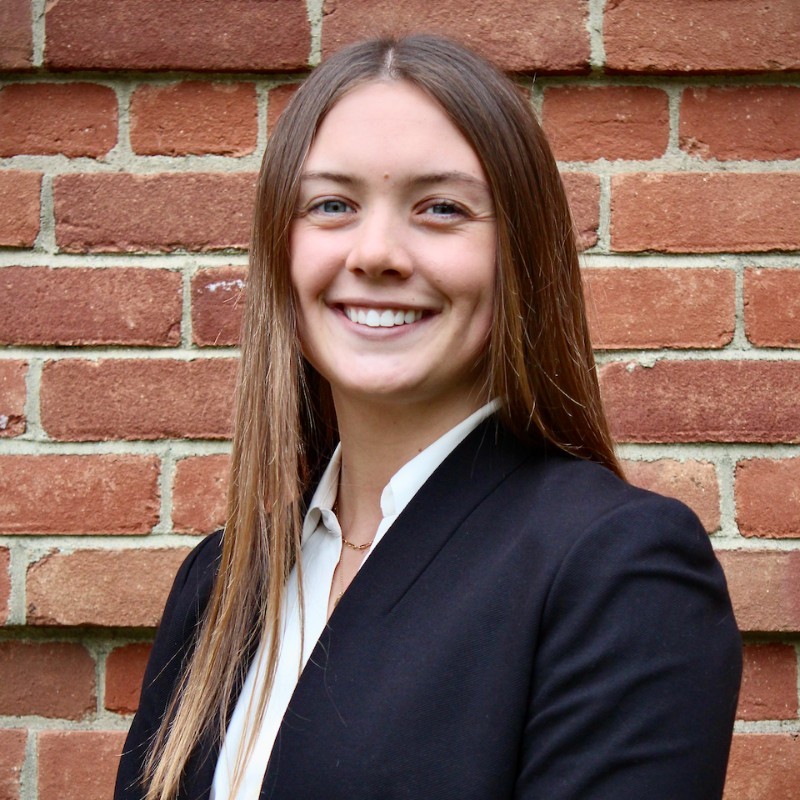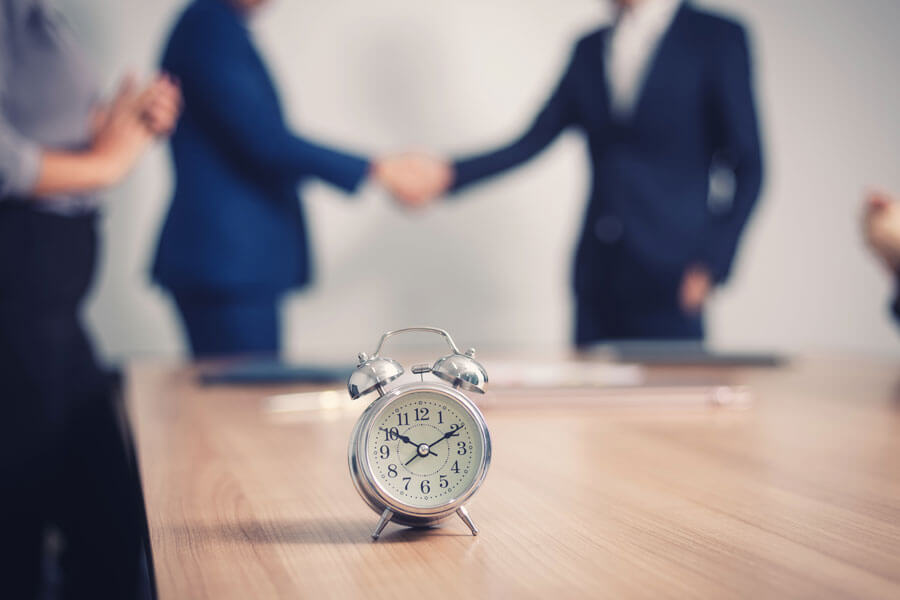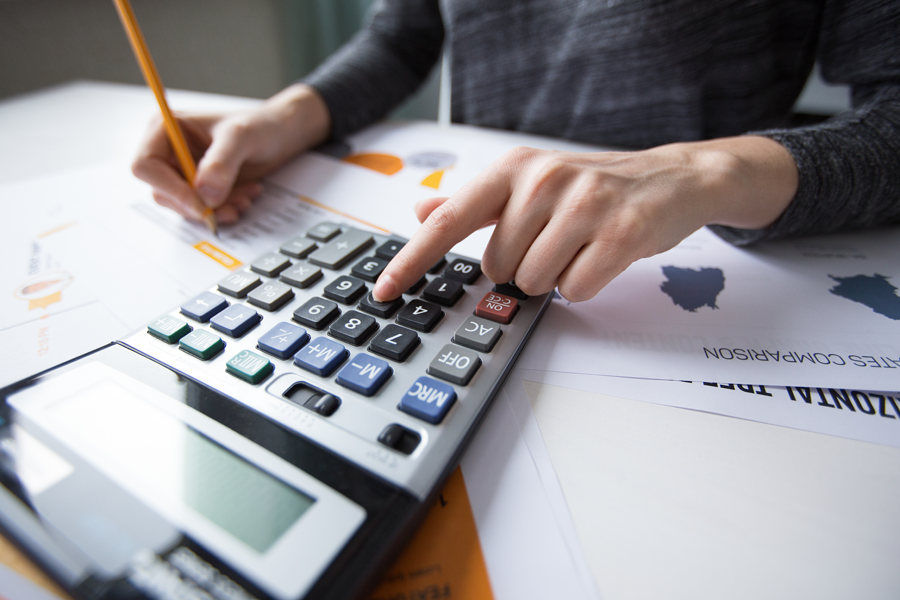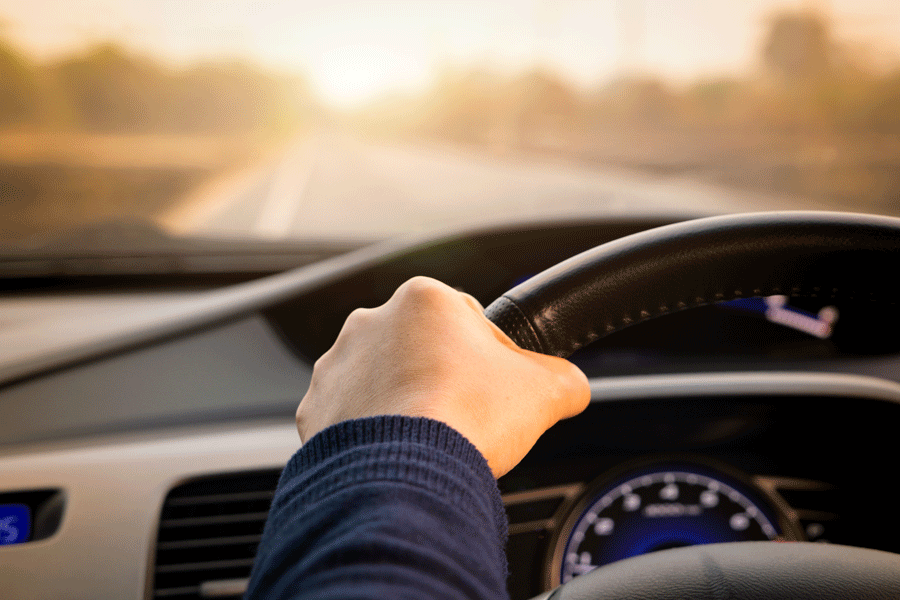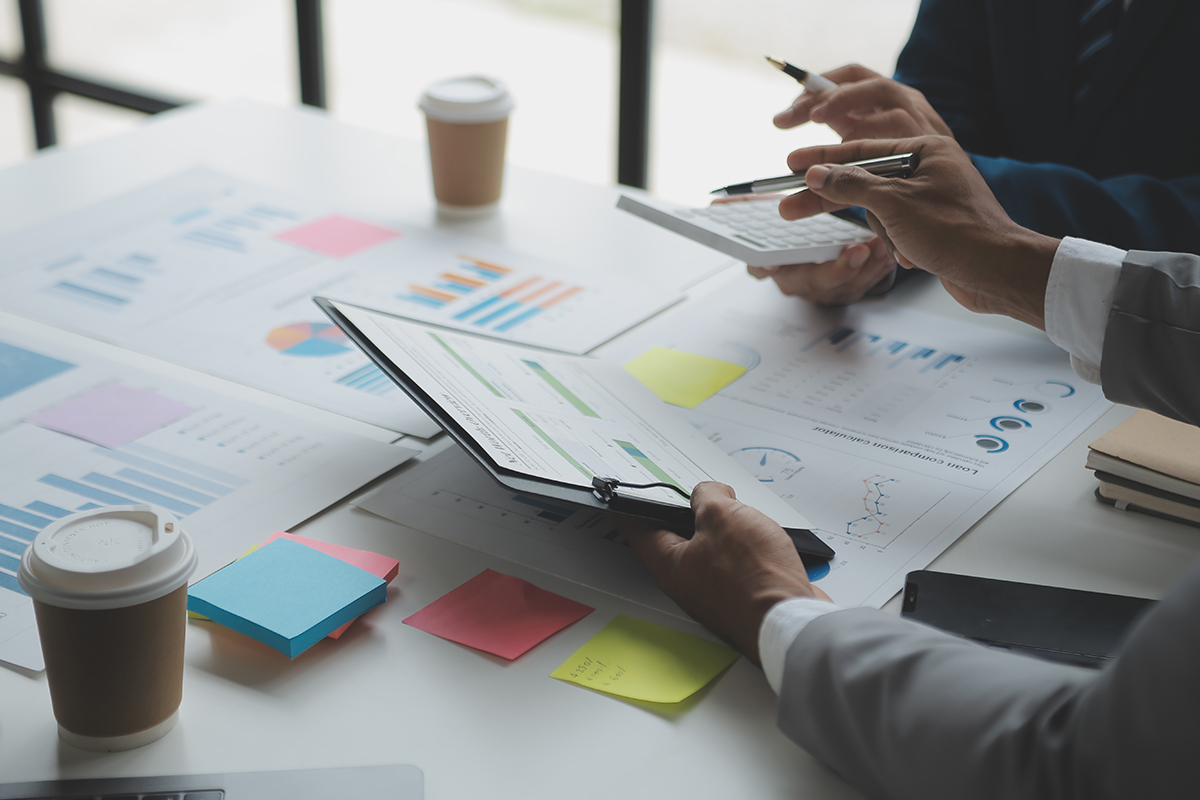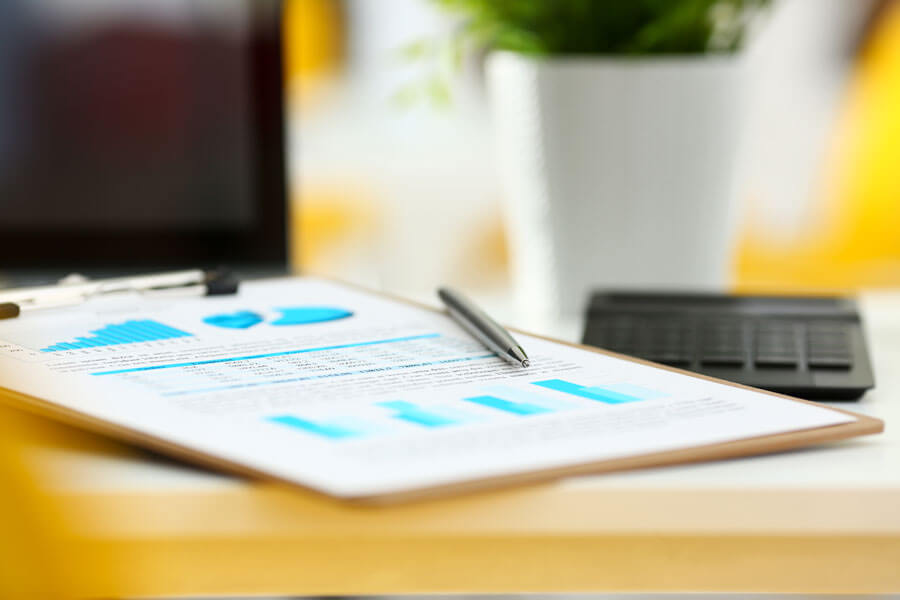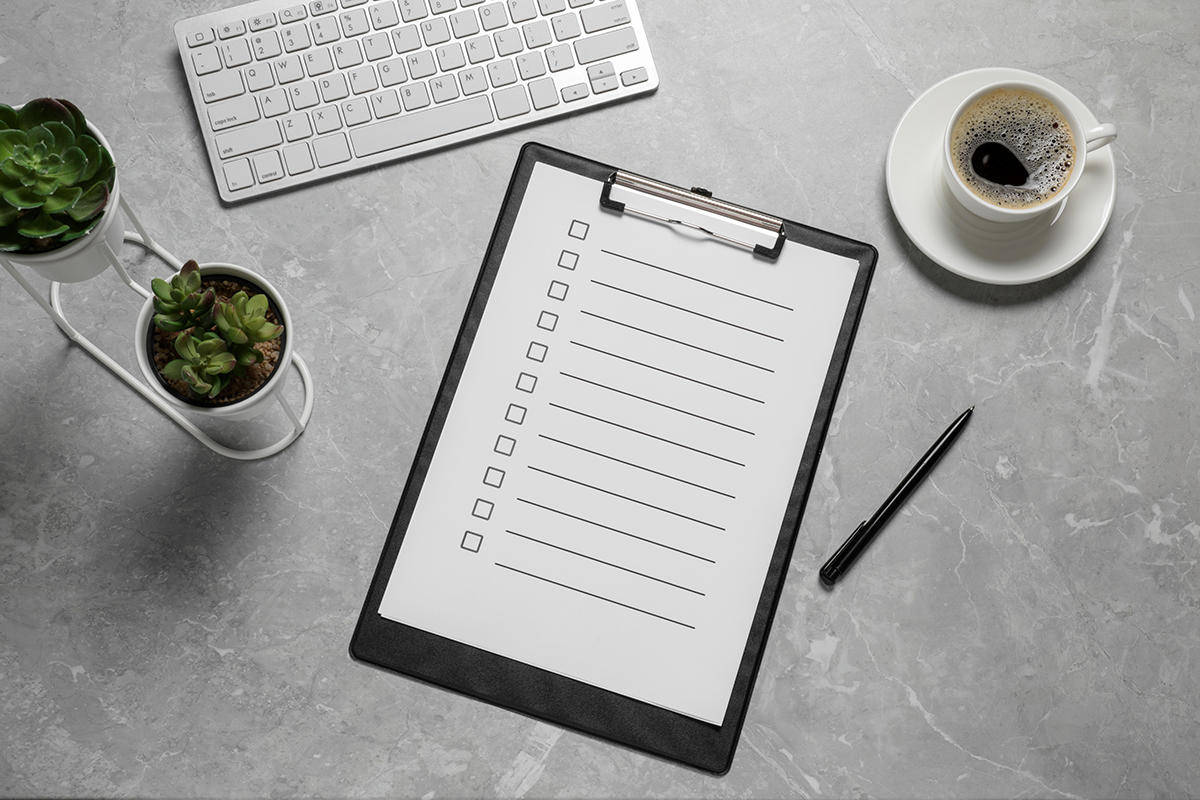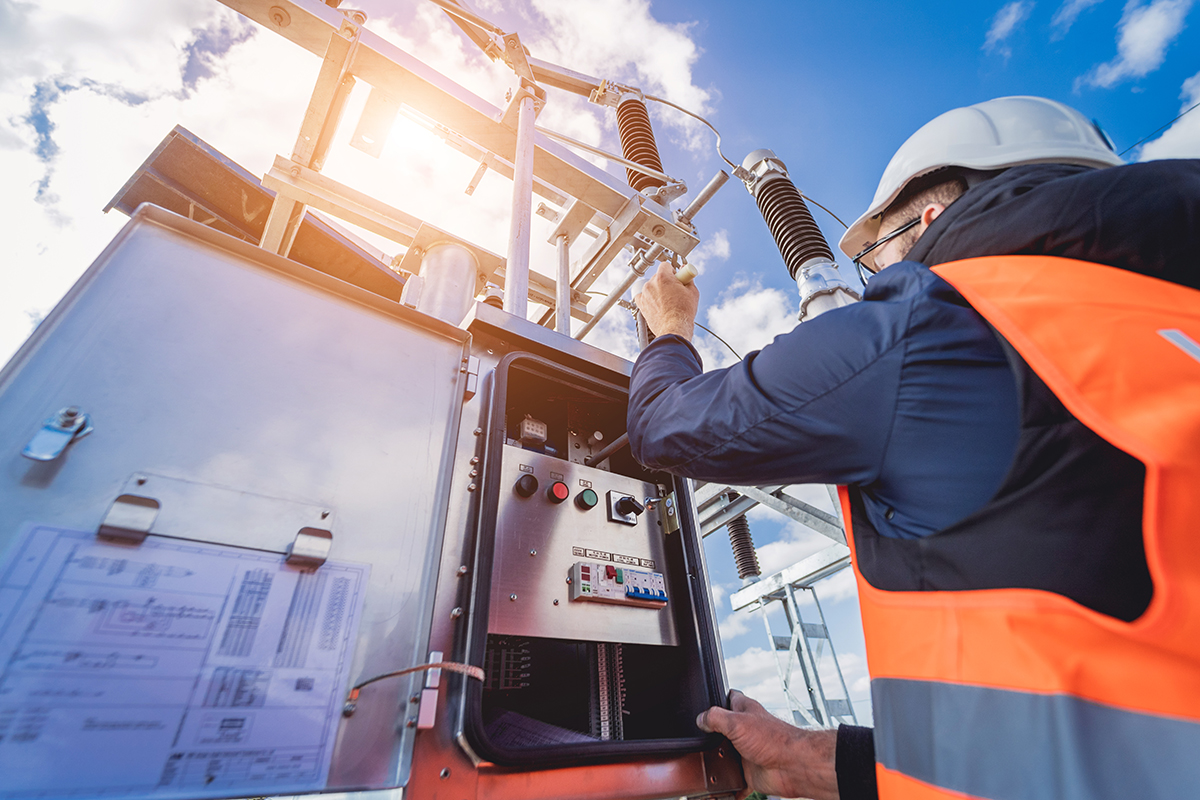Regular workouts or exercise can help improve your health and reduce the risk of developing several health conditions such as type 2 diabetes, cancer, cardiovascular disease, etc. Physical activity and exercise can have immediate and long-term health benefits, and most importantly, they can improve your quality of life regardless of your age, sex, or physical condition.
Nevertheless, sometimes it can be challenging to stick to your routine workout plans, especially if you do not keep a workout log template to help you stay on track and remain motivated to achieve your health and fitness goals.
This article covers everything you need to know about workout logs and effective templates for workout log, including the reasons and importance of keeping one, how to plan it, tips to make your workout log effective, and where to obtain free and professional templates to help you make suitable exercise logs quickly and efficiently.
Workout Log Templates
It is a pre-designed journal with fields for recording all your workout activities. The templates can be downloaded and personalised to suit users’ specific needs, and printed. Most templates are versatile, easy to fill, and helpful to achieve health and fitness goals. If you need an easy, efficient, and inexpensive way to create a workout log that can help you track your routine exercise activities, consider downloading the free templates available here. Your only task will be to select your preferred template, customise it to suit your needs, save it, or print it out for use.



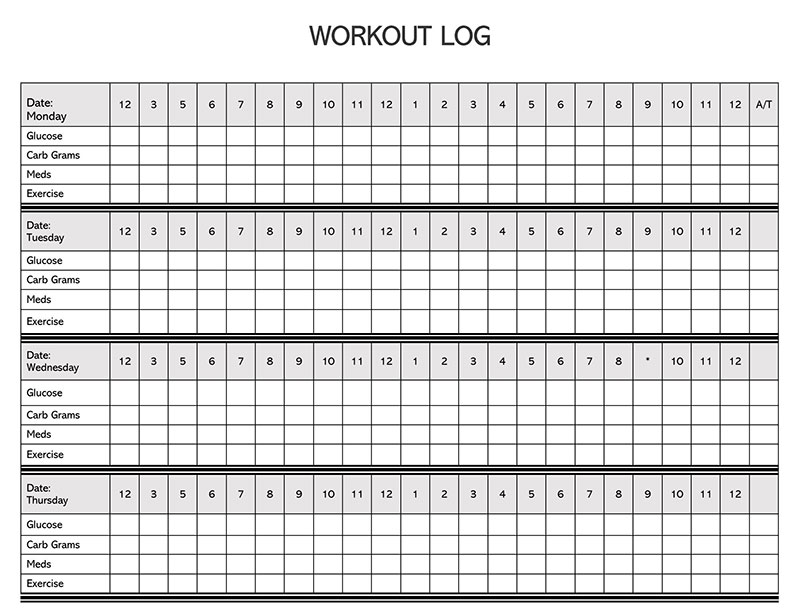

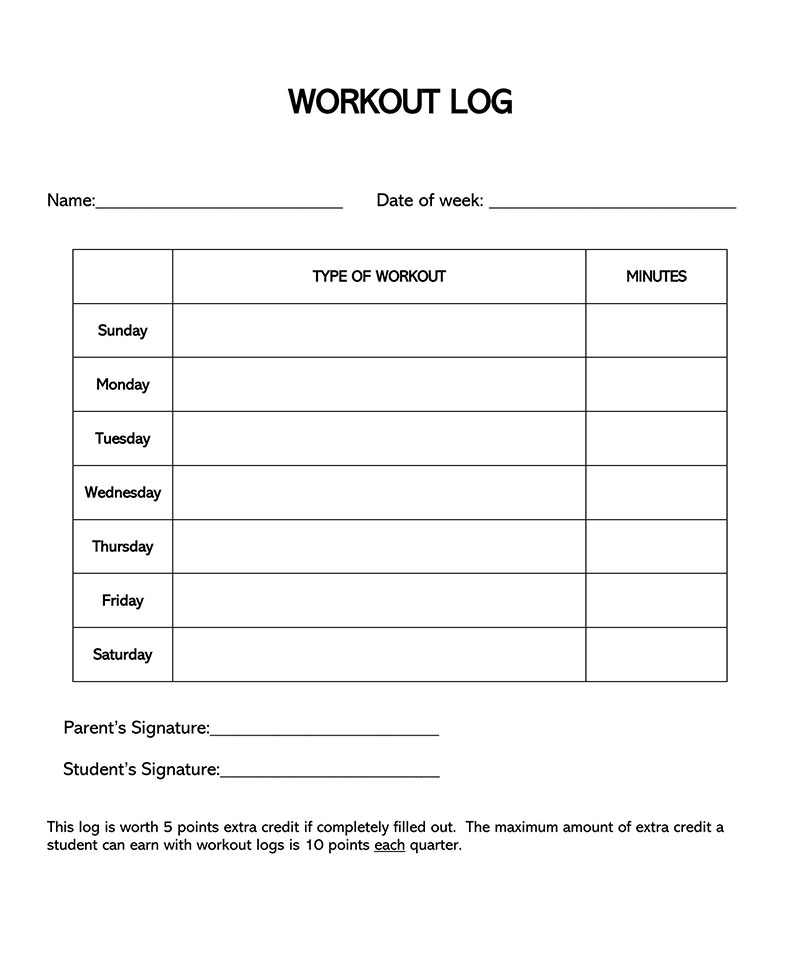
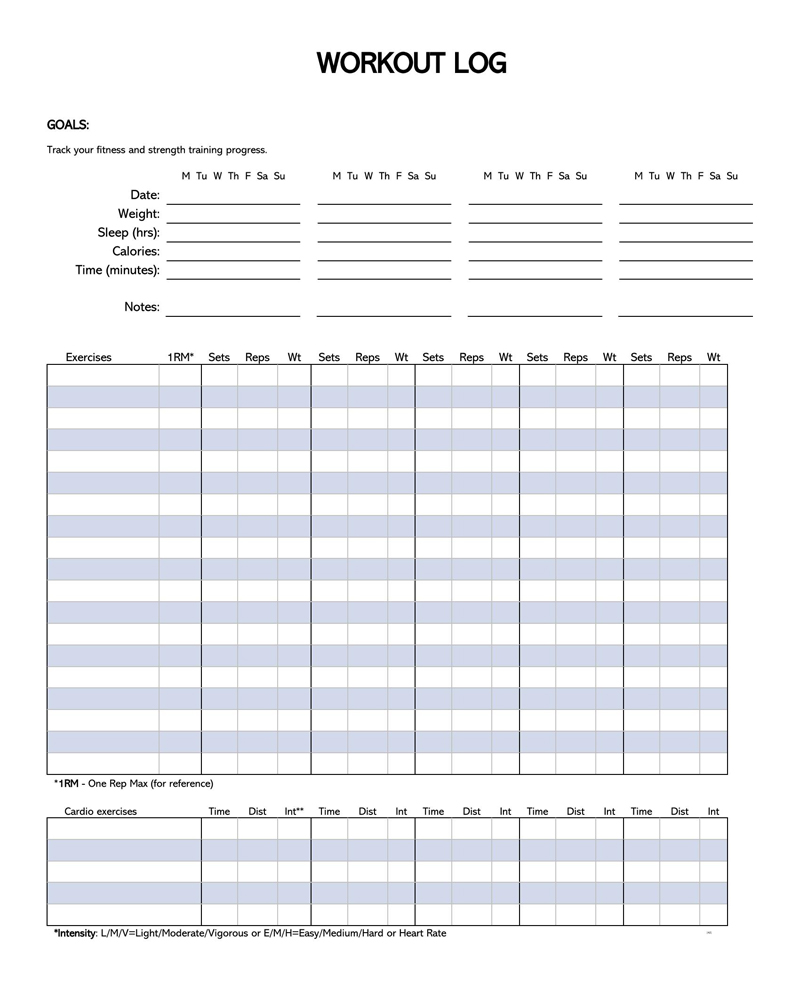

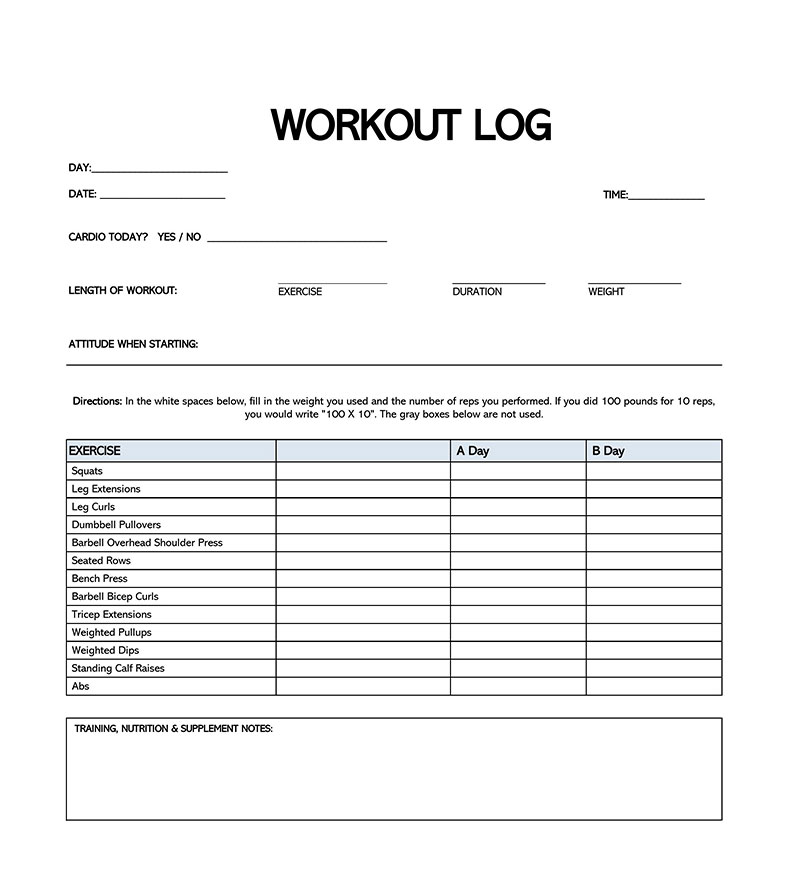



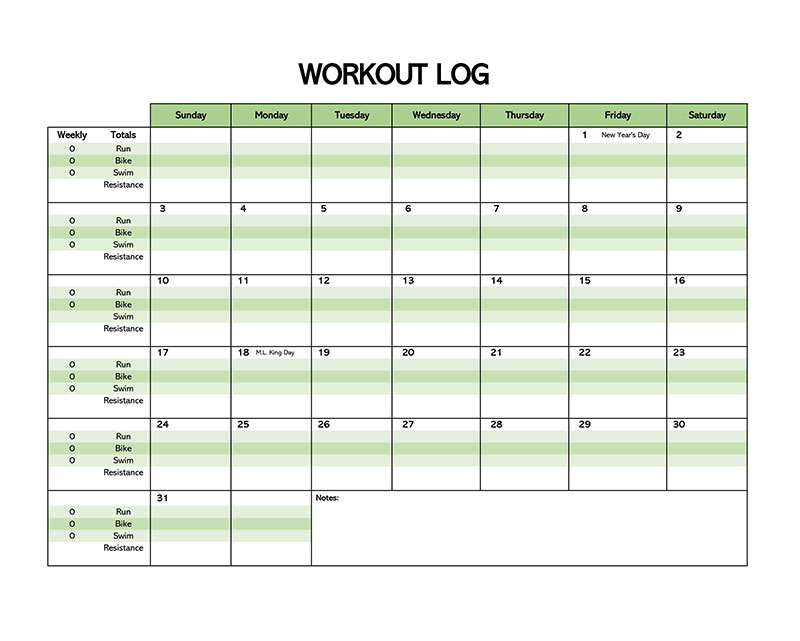
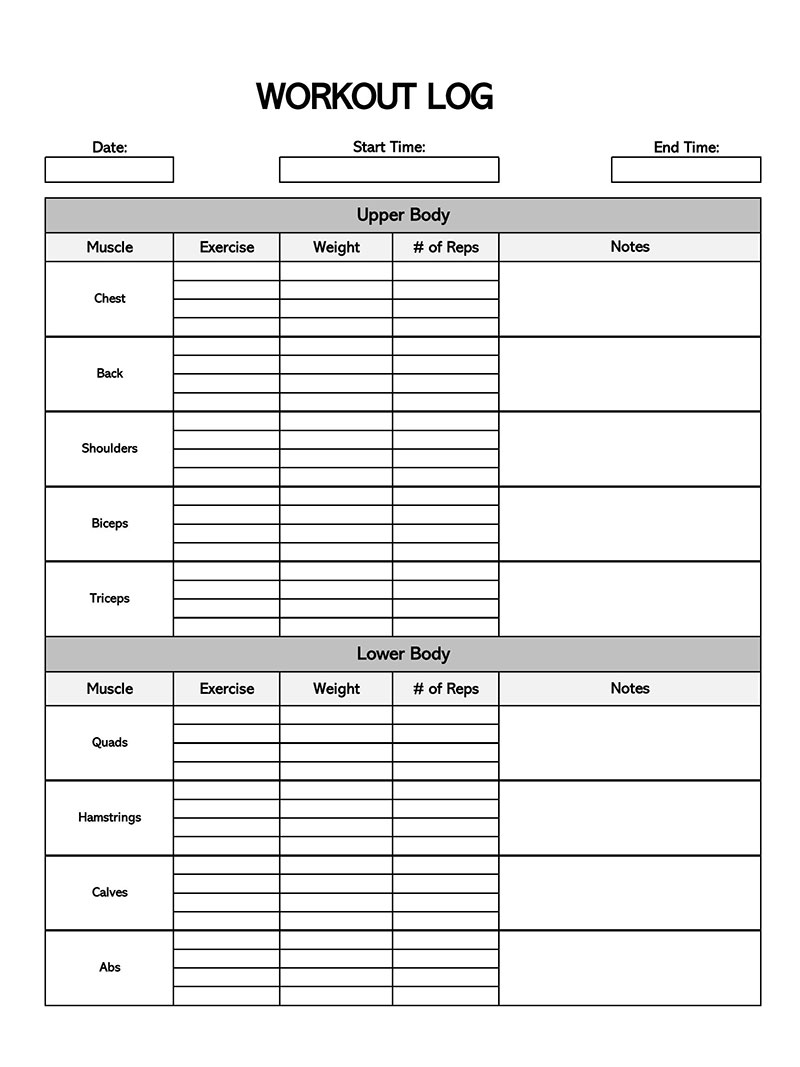
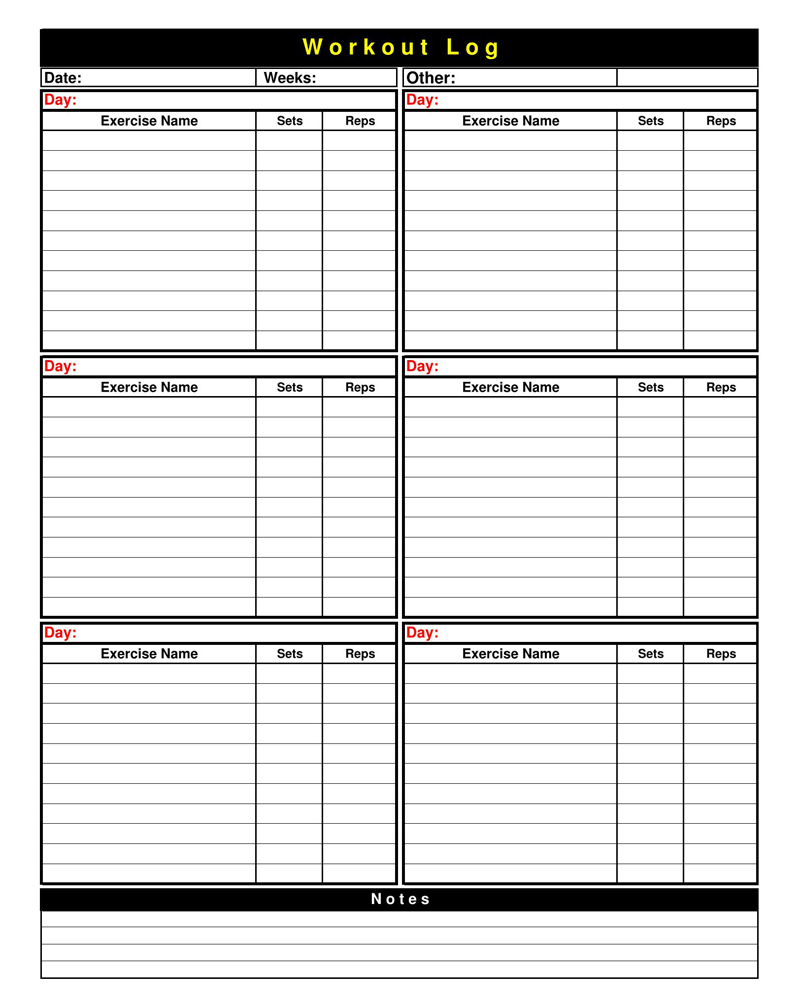

What is a Workout/Exercise Log?
A workout/exercise log is a document/journal that helps you keep track of your workout activities, including the type of exercise or training you need to do daily and the time you have available for the specific exercises.
Maintaining an effective workout log is crucial because it allows you to see patterns in case you are not meeting your exercise requirements, and it lets you track your progress and accomplishments. Besides, a practical workout log can help you identify challenges and problems, allowing you to devise the necessary adjustments to ensure you remain focused to achieve your health and fitness goals without much struggle.
For example, if you notice that you always skip your Monday exercise routine due to your busy schedule and exhaustion, you can find an appropriate day to schedule that routine so that you get the most out of your exercise.
How to Plan a Workout Log
You can use a journal, notebook, or printable template to track your exercise routine and progress towards achieving your goal. Regardless of the type of log and format, you decide to use; you will generally have to incorporate the following essential information to ensure your workout log is effective:
Include the date and time
As part of your pre-exercise routine, write the date at the top of the page and include the time. Tracking the date is essential for monitoring your progress and staying consistent with your workout plans, and including the date enables you to identify when you are most productive with your sessions.
Basic details
Next, provide the basic details for your planned workout routine for the day following the format:
[exercise]-[weight]-[sets] x [Reps]
In addition, make sure that you include rest intervals between the sets and weights you plan to use during the particular session.
Physical condition
The third step of planning your workout log involves noting your physical condition. For example, keep track of your pulse rate before exercising and peak activity. Ensure you are within the average heart rate range to avoid health complications. In addition, measure your body weight to determine whether you have lost fat or gained muscle, track your sleeping hours and diet, and note any discomfort or pains you feel before and after the exercise.
Workout condition
Next, write down the day and time you exercise to have a frame of reference and achieve consistency throughout your workouts. Finally, record the weather conditions to know under what conditions you work best and keep track of the road surface or equipment condition. Besides, pay attention to the atmosphere to understand which conditions improve your performance and what is not working.
Activities
Create an activity section where you note down the workouts you have done, the training machines you used, or the aerobic exercises you have completed. Record tally marks as you complete each of your workout sets to avoid the occasional mental lapse. Additionally, start the stopwatch to record your rest intervals to avoid excessively straining your body during the workouts.
Your moods, thoughts, and feelings
Generally, exercising can impact your moods, thoughts, and feelings. Thus, be sure to record how you felt at the beginning of a workout and check whether your mood has changed at the end of the exercise. Also, write down your thoughts and feelings at the end of each exercise such that you can use this information for future reference purposes.
Things to avoid
Remember to include additional notes on things to avoid helping improve your exercise routine in the future. For example, if lack of enough sleep made your workout difficult, note down this information to ensure you do not repeat the same mistake. If you did too many lifts that have left you with multiple body injuries, note down the total number of lifts you did so you know exactly when to stop next time.
Favourite things
Finally, make a list of your favourite things during that particular workout session. For example, write down what went well and why, note a pair of really comfortable shoes or gym wear, etc.
Reasons to Keep a Workout Log
When improving how consistent we are with our exercise routine, we often go for complicated and expensive solutions. For example, it is common to purchase an overpriced set of supplements, buy expensive compression gear or even hire a costly strength coach. However, while all these things can be valuable additions to your training regiment, they are not the only things that could help you remain consistent in your exercise routine. If you need a healthy way to remain dedicated to your workout and to your workout schedules, a workout log can be very beneficial.
The following are the main reasons to keep a workout log:
Promotes accuracy
An influential workout journal, notebook, or workout log template allows you to record the type of exercises you need to do daily, the progress you have made, and the kind of exercise/effort you need to put in to achieve your desired health and fitness goals. This way, you will achieve better results because you are focused on progression and know precisely what you need to do to achieve those results.
It helps you set better goals
Recording your workout activities in a suitable log teaches you to set witty and more realistic goals. Through it, you can quickly identify what works best for you, the things that drive results, what is not working, and the kind of adjustments you need to make to ensure everything is going according to your plan.
It keeps you honest
Going into the gym without a precise workout plan for the day is unlikely to give you the health and fitness goals you are hoping to achieve within a given period. It would be best to have a plan, and a workout log can help you plan for your time. Since everything is written down beforehand, you can eliminate the mental struggle of getting things done and the back and forth where you try to legitimise skipping out some exercises because you are too tired or checking out early.
It makes you feel more motivated and inspired
A workout log allows you to see how far you have come to achieve your fitness goals and what you need to do to obtain even better results. The sense of success and feeling of accomplishment at every step keeps you motivated, and you feel inspired to put in more effort to get to where you want to be.
It holds you accountable
If your training is vital to you, you must avoid getting lost in the daily ups and downs and see the bigger picture. And since you might not always have your fitness couch over your shoulders to keep you on track, a workout log can be your subtle reminder to get all your exercise sessions done and within the available time.
It allows you to discover patterns
Continuously keeping track of your physical activities for each day can help you discover patterns to make the most out of your workout sessions. For example, using your log, you can note down the relationship between sleeping and the rate of perceived effort during a workout, positive effects of eating well before and after your exercise, when to take a break to avoid straining yourself, and when you feel energised to make the most out of your time.
To make you improve your exercise routine
Generally, there is no one-size-fits-all solution for achieving fitness success. Every workout session you undertake is usually a trial-and-error program, which is why you need to have a journal or notebook where you note down past training sessions, how your body is responding, what is working and what needs to be improved. You can also segment each area for analysis, enabling you to maintain consistent progress across your exercise routine.
Consistent workouts
If you struggle with being more consistent, journaling your workouts can help you be more self-aware, helping you become more consistent with your workouts. A suitable template will serve as a checklist for all your exercise activities. You can use the log as a daily reminder to address the things holding you back, set intelligent and realistic workout plans, make adjustments where necessary, and track progress.
Evaluation of progress
An effective workout log can also assist you in evaluating how your body responds to your exercise regime and making necessary improvements. This is because it provides valuable insights into your past training sessions and the results obtained, which is critical in evaluating progress.
Injury prevention
While training, it is not uncommon to end up being injured or strain your body/muscles too much. However, you can minimise the chances of an injury using your exercise log template. By looking at your previous training records, you can identify the workout that strained your body too much, the number of steps, reps, and weights you used.
It will give you a chance to vent
Another benefit of using a workout log is that it gives you a chance to vent. While noting down what you did in the gym or during your training sessions, you can jot down thoughts and comments that can help clarify your workout further. For example, you can write down what went well and include details on why it went so well; then, you can use this record to improve your future exercise routine patterns.
Tips to Make a Workout Log Practical
When creating your workout log, you should consider certain things to ensure it effectively enables you to meet your desired workout goals. The following helpful tips can help you devise an effective log:
It should be versatile
An effective workout log should be versatile. It should adapt your current system to any training style, and it should be easily changeable, such that you do not have to create or find a new workout log each time you want to do a different workout style or incorporate new activities into your exercise routine.
Easy and quick to fill up
Your preferred workout tracker should be quick and easy to fill, such that you spend more time exercising rather than recording it. Moreover, your log should not include complicated wordings that confuse you, nor should it be challenging to find a page to write your workout plans for the day.
It should help you reach your goals
A practical log should also contain the most important information only. It should allow you to record what you have done, help you identify patterns, reduce any possible errors and allow you to make more informed decisions in your subsequent exercise sessions.
Bottom Line
Keeping a workout log is an excellent way to stay motivated and reach your exercise goals. This log helps you track what you do during your exercise time and how much progress you are making towards achieving your short-term and long-term health and fitness goals. By recording your workout activities in a suitable log and planning for your workout in advance, you will be consistent with your exercise, be accountable, remain motivated and inspired to put in more effort, discover patterns, and prevent the possibility of future injuries through self-awareness. In addition, you will be accurate with your exercises, enabling you to achieve all your goals with fewer efforts.
A practical workout journal includes the date and time of the workout, your physical condition before and after the exercise, the workout conditions, the day’s activities, and your reflection on the exercises you are doing. Regardless of what method or system you choose, sticking to an effective workout log will help you make consistent progress towards your fitness goals.
